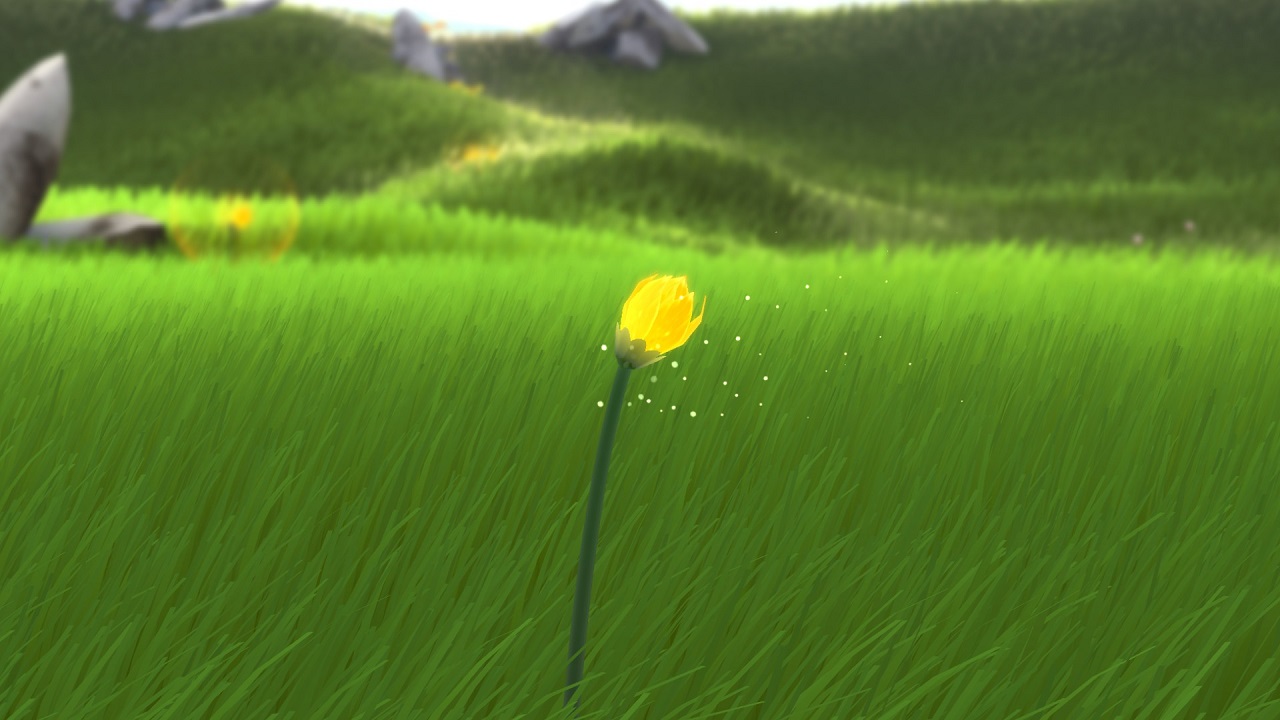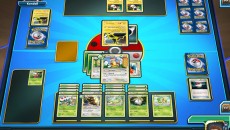If you asked anyone their opinion on the influx of smaller, quirky titles that started on the PlayStation 3 and Xbox 360, you’ll probably hear them mutter something about artsy-ness, pretension, Phil Fish, and Journey.
And their bitter cynicism might not be entirely unwarranted; there’s no shortage of artsy, retrograde games, one-mechanic ponies, and “homages”. Well, they do say that identity theft is the sincerest form of flattery…right?
Sony published Journey, and received no shortage of criticism from some gamers who had been looking forward to playing it on other platforms. Forget Braid, forget Fez, Journey was arguably being the first break-out “indie” title that caused waves of interest and garnered no small amount of (positive) attention from outside of the specialist gaming press. But before Journey, developers Thatgamecompany made that game - Flower.
Originally released for the PlayStation 3 in 2009, Flower has since fallen into relative obscurity under Journey’s shadow. And perhaps for good reason; taking a second look at Flower now following its re-release on PlayStation 4, one of the games at the forefront of the modern indie push, it seems to have wilted.
The premise is simple. You take the role of a petal plucked from a single flower, adrift in the breeze. By holding the X button down to move forwards, and by angling and tilting the controller (or system if you’re playing on the Vita) you maneuver the petal through the air towards other flowers. As you brush up against them musical notes play and more petals are added to a growing petal stream. Brush up against all the flowers in any given section of the stage and it will transform from grey and lifeless to verdant.
And…that’s really it. It sort-of works for several reasons. First, Flower places all the responsibility on figuring things out to you. There’s no tutorials or explanation - instead you’re left to inquisitively poke around meadows and figure things out for yourself. The same is true of the understated story, which is shown in snippets, cutscenes and thematic variances in each stage – there’s a significant “aha!” moment towards the end of the game when Flower’s message becomes clear. Its poignancy grains traction towards its conclusion, leaving you to deliver the knock-out narrative blow to yourself.
However, that buzz of revelation is both Flower’s greatest moment and main concern. By nature, revelation can only emotionally sucker-punch the player once. Some games are so intricately built around revelation that their exact construction can be appreciated retroactively. Flower is not one of those games: on the second playthrough, I couldn’t figure out which elements had triggered the Zen-like realization, much less re-experience it.
Still, Flower’s story is worth experiencing even if it only hits you once. It’s the opposite of pretentious. It’s transparent and powerful enough that it won’t fly over your head and subdued enough that it won’t slap you in the face.
Also noteworthy is that there’s no form of score-keeping, yet Flower plays “better” the “better” you play. The game is only appreciable once: this is a game where you can’t possibly fail, short of walking away from the controller.
And yet, deftly weaving your way through rocks, sailing on the wind, and chaining together flower hits in smooth succession feels good if not right. This is partly because of the sound design where notes play even as you hit non-critical flowers, which delineate (rather than egregiously highlight) the path forward. These sound-flowers play a functional and aesthetic role rather than a mechanical one, but Flower is better for it; it allows the game to remain “naturally” simplistic while keeping you from getting bored during long, otherwise uneventful flights.
But it also feels good in part because you can feel yourself rushing through thickets of grass as hundreds of individual blades part and bend under your momentum. It ebbs and flows with tactility.
Whereas many indie games are retro-chic if not retrograde, Flower could only have worked as well as it does on more modern platforms. It’s a compelling contrast against the cheap nostalgia abuse prevalent among indies.
But Flower’s biggest issue is it lacks replayability. It’s not because it’s only an hour long - its length feels right. And it’s not because it’s lacking in much sorely needed post-game content, it isn’t. Rather, it’s hard to appreciate it for being anything more than a game that once moved me, rather than one that will continue to move me. Flower is very much a video game that aspires to be art. However, paintings don’t lose their luster upon re-examination, and if anything they make us feel renewed appreciation for the craftsmanship that went into them or give us scope to discover something new. Flower doesn’t do these things.
I can’t imagine Flower will ever be displayed in some future video game museum – it simply doesn’t have that enduring edge to it and that goes not only for the story but most of its design choices. But if you haven’t played it before you might want to consider seeing what the video game equivalent of an artist’s draft plays like: pretty, skillfully drawn even, a touch meaningful, but ultimately discarded and forgotten.




